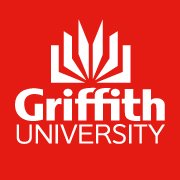Full description
Approximately 300 GL of water evaporates from water storages in South East Queensland (SEQ) each year: roughly equal to urban water use in SEQ. This means two units of water need to be collected and stored for each unit of water supplied. There is consequently much benefit to be gained through the development and application of techniques for reducing evaporation. This dataset contains measurements of change in water height, humidity, air temperature, wind velocity and direction, surface water temperature and water temperature, which were collected within the Griffith University engineering laboratory (G09 1.40) in the wave tank enclosure. The wave tank is set up with the instruments at prescribed locations. The wind sonic, wind velocity probes, vaisala humidity probes and tough sonic distance sensor are connected to a DBK202 data logger which records and stores the data using Dasylab software. The radiometer and water temperature probes are connected to a CR100 data logger and the data is recorded and saved by LoggerNet software. The EasyLogger has an internal memory which stores the air temperature and humidity and can be downloaded post-experiment using EasyLog software. The experiment is run for a prescribed time defined by a starting and finishing time, which is manually synschronised between DasyLab, LoggerNet and EasyLog. Once an experiment is completed the EasyLog data is downloaded using the associated software, and the Dasylab and LoggerNet data is automatically saved as an ASCII file to a specified location. Using Matlab, these files are combined into one Excel (.xls) file. Traditionally, water conservation has mostly targeted demand management, with consumers being educated to make smarter use of our water resource. The water industry stands to make further significant savings by applying new ideas to the areas of evaporation prevention and in rapid detection of system leaks to allow their repair. In South East Queensland, loss of water from our dams, rivers and other water storages through natural evaporation are estimated at around 300GL per year, while losses through degraded or damage to infrastructure could be as high as 40GL per year. This project aims to develop new and innovative techniques for reducing evaporation, from the management of near surface heat stores, shallow water partitioning, to partial covering and manipulation of turbulence fields around storages, with each technique being fully assessed in relation to effects on aquaculture, recreation, water treatment etc. Initial analysis of such techniques suggests that a 10% reduction in evaporation may be possible at a cost much less than alternative methods to boost water supplies (i.e. desalination, recycling). Application of advanced leakage detection systems in the reticulation network and manipulation of processes controlling evaporation at storage facilities could offer the SEQ region potential savings in excess of 50GL/year.Issued: 2012
Subjects
Civil Engineering |
Engineering |
Evaporation rates |
Water Resources Engineering |
evaporation loss |
monolayers |
wave tank |
User Contributed Tags
Login to tag this record with meaningful keywords to make it easier to discover
Identifiers
- DOI : 10.4225/01/513D5A4AD7D62

- Handle : 10072/395810



